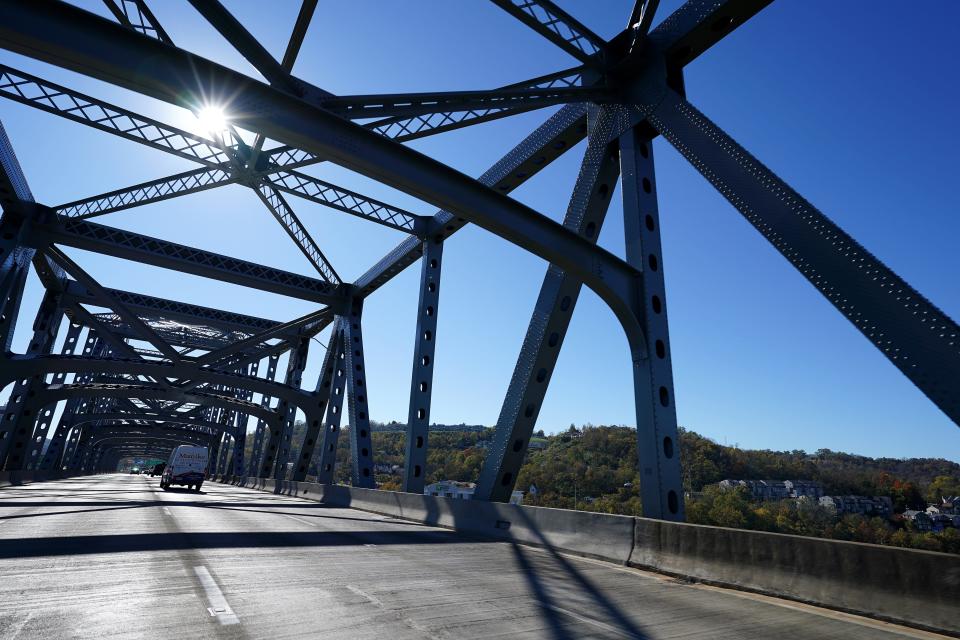Five things to know as Brent Spence Bridge project marks another milestone
After close to two decades of discussion and planning, Ohio and Kentucky took another giant step this week on plans to build a companion bridge next to the Brent Spence Bridge.

Here are five new things to know about Greater Cincinnati’s most important public works project, one that moves 160,000 vehicles and $2 billion in freight over the Ohio River each day:
1. The states want $1.66 billion from the federal government. Officials announced this week that they applied for that much in what is called a Multimodal Projects Discretionary Grant, created through the new infrastructure law signed by President Joe Biden. The grant and other federal dollars are critical to the overall financial package. Without them, “The project would be delayed for the foreseeable future until additional funding can be identified,” the grant application said. The states expect to know whether they’ll get the $1.66 billion by the fall of 2023.
Jason Williams: 'Bridge Forward' would take us backward on Brent Spence Bridge project
Opinion: Finally, some action to improve the 'obsolete' Brent Spence Bridge
2. The federal grant would be about 60% of the project’s overall $2.77 billion price tag. The states would assemble the rest using a combination of state and federal sources, according to the application:
Kentucky would provide $572 million more. Of that, $441 million would come from state coffers and $131 million from federal sources.
Ohio would kick in $539 million. It would contribute $303 million from state funds, using fuel tax dollars and state highway bonds. The remaining $236 million would come from the federal government.
The two states are already deeply invested in the project, with $190.2 million in spending through this year. All of Kentucky’s $46.7 million in spending came from federal sources. About 65% of Ohio’s $143.5 million was federal dollars.

3. As they await word on federal funding requests, the states are moving to hire a consultant to oversee contracts, coordinate public outreach and otherwise manage the project. Consultants’ letters of interest for that $11.5 million contract are due May 31. That consultant will take over from HNTB Corp., which is currently completing a $14.2 million engineering contract on the project.
4. Actual construction will begin “no later than 18 months after receiving federal funding,” according to the grant application. The application includes a groundbreaking date near the end of 2023, with completion by the end of 2028. The start could be pushed out, however, if the states are slow to secure federal funds.
5. Plans call for a new bridge to run adjacent and just west of the existing Brent Spence, along with improvements to the existing bridge and the interstate network from the Western Hills Viaduct in Ohio to Dixie Highway in Kentucky. Cincinnati and Covington both get perks too. Among them: A new exit at Ezzard Charles Drive in Ohio and improvements between Dixie Highway and Kyles Lane in Kentucky.
BSB Corridor Project Design May22 (002) by CincinnatiEnquirer on Scribd
This article originally appeared on Cincinnati Enquirer: Brent Spence Bridge project: Latest on new Ohio River crossing

